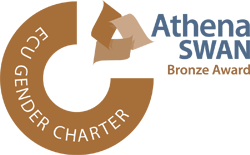Enter Macbeth and Banquo
MACBETH [to Banquo] So foul and fair a day I have not seen.
BANQUO How far is’t called to Forres?—What are these,
So withered, and so wild in their attire,
That look not like th’inhabitants o’th’ earth
And yet are on’t? [To the Witches] Live you, or are you aught
That man may question? You seem to understand me,
By each at once her chappy finger laying
Upon her skinny lips. You should be women,
And yet your beards forbid me to interpret
That you are so.
MACBETH Speak if you can: what are you? (1.3.33-42)
What strikes the ear immediately, of course, is the foul and fair, the echo of the witches’ first scene, and therefore the knowledge that the distinction between the two, between foul and fair, is a slippery and unstable one. As far as Macbeth’s concerned, it’s foul because of the weather; it’s fairbecause they’ve just won a battle against terrible odds. They just want to get to where they’re meant to be going—how far is’t called to Forres, are we nearly there yet? but then, they notice, or rather Banquo does. Something strange here. What are these, so withered, and so wild in their attire,that look not like th’inhabitants o’th’ earth and yet are on’t? What are these isn’t necessarily a suggestion that Banquo’s not sure if they’re human or not; it’s a standard form of address in the period: what are you, rather than who are you? implicitly, what’s your status, your identity, where do you fit? and some design notes for a production to agonise over (or not): the witches are withered, old, and wild in their attire. They are perhaps, in the terminology of the early modern wardrobe, antics; what they’re wearing is not exactly street-wear or otherwise standard dress (as other costumes mostly were). It might be ragged, or involve draperies; something a bit fantastical. (The picture of the encounter with the witches in Holinshed’s Chronicles shows the witches wearing immaculate Elizabethan dress, pretty much.) What matters is that they’re out of place, wholly unexpected, whatever they’re wearing. (Incidentally, there is no evidence that they were played by the adult men of the company; the witches were almost certainly played by the boys, so, teenagers.) They look like the inhabitants of the earth—so, human (unlike, perhaps, Caliban or Ariel)—and yet somehow unearthly, fantastical. So Banquo asks: are you human? live you? Or are you aught that man may question, something doubtful, questionable? (rather than, of whom questions may be asked, although the suggestion is certainly there for the ear of the modern audience, as if he’s already imagining them as sibyls, or fortune-tellers). There must be gestures, probably synchronised: they seem to understand; each puts her chappy, chapped finger to her skinny lips. Ssssssssshhhh. And a final bafflement: you should be women, you seem to be women (presumably from your dress) and yet your beards forbid me to interpret that you are so. Ah. Problem for the designer? important character note? Impossible to know how it might have been done—the weirdness of full beards (and false beards were very much a thing on the early modern stage, in all sorts of styles, with their own range of associations) or wispy bits, just odd, but still feminine, facial hair? Whatever, Banquo’s thoroughly discombobulated. So now Macbeth has a go, going back to basics. Speak if you can: what are you?

